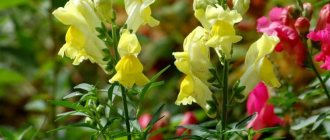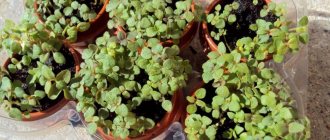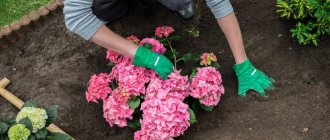Snapdragon, or antirrhinum, is an annual plant with inflorescences of a wide variety of colors. Its decorativeness and unpretentiousness allowed it to earn the love of many flower growers. Not growing snapdragons yet? It's time to change that!
According to legend, the snapdragon was created in honor of the first labor of Hercules. The hero of ancient Greek mythology strangled a bloodthirsty man-eating lion and thereby proved his superhuman strength. Also, the flower is often compared to the mouth of a dragon or wolf, and even the head of a dog (hence another name for snapdragon - doggie). The seed pods of the antirrhinum vaguely resemble a human skull.
In a word, this is an amazing plant that will become a worthy decoration for flower beds, alpine slides, and mixborders. You can also grow it in containers. Snapdragon blooms from June to October, depending on the sowing time. Antirrinum is light-loving and will easily tolerate light frosts.
Which snapdragon should you choose? When purchasing seeds, focus not only on the color of the inflorescences, but also on the height of the plants. On this basis, approximately the following groups of antirrinum are distinguished:
- tall – 70-120 cm,
- medium height – 40-60 cm,
- short – 25-40 cm,
- dwarf – 15-20 cm.
Snapdragon is widely used in folk medicine to treat the liver, intestines, and genitourinary system. An infusion of flowers helps with headaches.
In cold regions, they practice sowing snapdragons for seedlings. This way you can get flowering plants faster.
Types and popular varieties
Ruby red
Snapdragon can be divided according to the height of its shoots:
- Miniature - the height of the shoots is less than 20 cm.
- Low-growing - shoot height from 25 cm to 40 cm.
- Medium height - shoot height from 40 cm to 60 cm.
- Tall - shoot height more than one meter.
Let's look at some popular varieties.
Ruby
An annual tall hybrid plant, the height of which reaches 80 cm. It is grown both by seedlings and by sowing in the ground. Leaves and shoots are bright green. The flowers are two-lipped, bright red. The inflorescence looks like a brush. It blooms all summer, from June until frost. In order for new buds to form more abundantly, it is necessary to remove old faded ones. This variety is planted in flower beds and ridges. Looks good as separate islands in the garden. Perfect for cutting.
Handsome dwarf
A miniature variety, the height of which does not exceed 18 cm. The bushes have a lot of foliage, and above it a beautiful brush is formed, consisting of blood-red, almost burgundy flowers. Planted in balcony boxes, along the edges of flower beds and lawns.
Peach with cream
The plant belongs to the low-growing varieties. Height is about 25 cm. The color of the flowers is unusual - creamy peach. The bush is small and compact. The leaves are oval, the flowers are very large. Each bud can live more than 10 days. They are used in most cases as a border plant, as well as for decorating balconies.
Sneppy F1
A hybrid belonging to medium-sized varieties. Height is about 50 cm. The bushes are small, about 20 cm wide. The flowers are small, of a beautiful pink color, forming a neat panicle. It blooms for a very long time until the snow.
This hybrid is planted in balcony boxes, flower beds and ridges.
Madame Butterfly
An annual, tall hybrid. The height of the bush is more than 75 cm. The width of the bush can grow up to 40 cm.
The inflorescences, like those of other varieties, look like a brush, have a delicate aroma and a variety of flower colors. It blooms very profusely and for a long time.
Planted in flower beds and individual plantings. Keeps well when cut.
Floral Showers
Low growing hybrid plant. About 18 cm high. The bushes are not large. The leaves are bright green. The flowers form racemose inflorescences. The color of the flowers is a combination of honey-yellow and red.
Grown in flowerpots and flower pots, as well as for border decoration.
Candy Showers
An ampelous annual plant. Grown in pots and as a ground cover plant. Burgundy-red flowers pair well with bright green foliage.
Volcano
Tall plant. Height 75 cm. The bush resembles a regular pyramid. The racemose large inflorescences have a strong aroma. The flowers are painted in all shades of yellow.
Tip-top
Tall plant. The height of the shoots is about 80 cm. The racemose inflorescences consist of unusually beautiful pink flowers with a honey-yellow border. The variety is good for making bouquets and for decorating flower beds.
Rose
This variety is very common among gardeners. The bush is tall, about 1 m in height. The flowers are beautiful pink. Perfect for bouquets and garden decoration.
Velvet giant
Tall plant. The height of a regular bush is about 85 cm. Dark red flowers form loose inflorescences. This variety is not prone to lodging even in strong winds.
Description and characteristics of the plant
The genus Antirrhinum Antirrhinum includes more than 20 species. Snapdragon (Antirrhinum majus) is the type species of the genus Antirrhinum. It is a herbaceous plant with light green lanceolate leaves. The shoots are erect, slightly woody at the base, the leaves are lanceolate and rounded. Under natural conditions it is a perennial plant, but in our climate it is grown as an annual. Pollinated only by bumblebees and bees.
The plant bushes heavily. Height depends on the variety:
- dwarf varieties grow up to 20-25 cm;
- the large antirrhinum reaches a height of 90 cm.
Flowers with a double lip and a baggy swelling at the base, reach a length of 2.5-5 cm, are simple and double. The flowers are collected in racemose, cluster inflorescences located at the tops of the shoots. The petals have a funny, characteristic shape - when pressed, they open wide, reminiscent of the mouth of an animal. Thanks to this feature, people often call this flower “dogs,” which children love to play with. Most varieties smell pleasant.
Dog flowers are suitable for gardens where children play. They are not poisonous.
The color of the flowers is also attractive and varied - all colors are found except blue. Particularly good are varieties with snow-white, lemon, apricot, red or cherry flowers, often with a velvety coating. There are two- and multi-colored flowers. Flowering lasts from July until the first frost.
Interesting facts: Antirrhinum is native to Southern Europe and North Africa. In the United States, this plant is one of the most popular cut flowers grown in greenhouses.
Variety Madame Butterfly
When to sow snapdragons for seedlings
It should take approximately one and a half to two months from germination to mature seedlings that can be planted in open ground. Based on this, you can calculate when it is necessary to sow lion sowing seeds for seedlings. Of course, this will be a different time in each region.
- So in the southern regions, already in mid-April, snapdragon can be planted in a permanent place in the flower garden; therefore, it is planted for seedlings at the end of February.
- In the Moscow region and central Russia, seedlings will need to be planted in mid-May or a little later, therefore, in mid-March it is necessary to sow Antirrinum for seedlings.
- In the Urals, Siberia and the Leningrad region, it will be necessary to plant it even later by a couple of weeks, therefore, the sowing time for snapdragon is postponed by half a month and it is planted for seedlings in late March early April.
According to the Lunar calendar in 2022
Many gardeners won’t even take a step without the Lunar calendar. This also applies to planting Snapdragon. The table shows favorable and unfavorable days for sowing snapdragon in 2020.
| Month | Favorable days | Unfavorable days |
| February | 2-3, 6-7, 24-25 | 9-10, 21-23 |
| March | 2-3, 27-28, 30-31 | 7-9, 24-26 |
| April | 1-2, 6-7, 24, 28-29 | 8, 21-23 |
| May | 2-6, 15-17, 20, 21, 25-31 | 7, 13-14, 22 |
| June | 2-4, 7-9, 11-14, 16-19 | 5, 9-11, 21 |
Illumination for antirrinum
Snapdragon is a light-loving crop. Its seedlings need 12-14 hours of daylight. When sowing in winter, seedlings will require additional lighting. For this purpose, LED and fluorescent lamps and phytolamps are used. The lamp should be located at a height of 30 cm from the plants.
In clear weather, it is turned on for 2-3 hours in the morning and evening. If it is cloudy, the backlight can be left on all day. Supplemental lighting is usually used until mid-March, until day length naturally increases.
Calibrachoa from Seeds: 5 Helpful Tips for Growing
How to grow seedlings at home
There is an opinion that Snapdragon can be planted directly in open ground. Of course, it’s possible, but flowering will occur a couple of months later, and this is already the end of summer. And in the fall, frosts may occur, so in order to enjoy the modest beauty of this flower, it is better to plant it through seedlings. And for this you need to prepare containers, soil and, of course, the seeds themselves.
Preparing soil and containers
Snapdragon is not picky about soil. Any fertile soil will do. You can buy universal soil for flowering plants at the store, or you can prepare the soil for seedlings yourself. To do this take:
- Garden soil - 3 parts;
- Garden soil - 3 parts;
- Peat – 3 parts;
- Sand – 1 part.
Snapdragon loves the ground near coniferous trees. Therefore, it is useful to add such soil to the composition of the prepared soil.
Before sowing, the soil must be disinfected. Heat it in the oven or pour boiling water over it. Then you can treat it with a weak solution of manganese.
Plastic containers, disposable cups or special boxes for seedlings are suitable as containers. The height of the container must be at least 10 cm. They must also be washed with hot water and treated with a solution of potassium permanganate.
It is very convenient to sow snapdragon seeds in peat tablets. Before use, the tablets must be soaked in a small amount of water to swell.
Ampelous petunia: growing from seeds at home
Selection of seeds and preparation for sowing
Before sowing seeds, you need to decide whether you want to get a tall or small plant. Use flowers for cutting or admire them in compositions created in the garden. Based on this, you need to choose a flower variety.
Before sowing, seeds must be treated in a weak solution of manganese and soaked for several minutes in a growth stimulator. This will help you get healthy and strong seedlings.
Sowing
Drainage is poured into the bottom of the prepared container; it can be small pebbles or coarse sand. Then the prepared soil is placed. Make shallow furrows in the soil every 3-4 cm, and lightly moisten the soil with a spray bottle. The seeds are mixed with sifted sand and sown in the furrows. Sprinkle a thin layer of sand on top and moisten again.
Cover the container with film or glass and put it in a warm place. The temperature should be at least 18-20 degrees Celsius. All that remains is to wait for the shoots to appear. They will appear in about a week and a half. If the soil dries out during this time, it is moistened. The plantings must be ventilated every day by raising the shelter for a few minutes.
Snapdragon, sowing seeds for seedlings - video
Features of sowing
Beginners may be intimidated by the fact that the seeds of antirrinum are too small. There is no need to be afraid, you just need to use the correct sowing technology:
- The seeds are poured from the bag onto a white sheet of paper, on which they are clearly visible.
- The leaf is folded in the middle, after which the seeds move to the fold line.
- The paper is brought to the surface and the seeds are evenly distributed on the ground.
- The top of the crops is sprinkled with dry soil without lumps.
- As a result, the seeds should be at a depth of 1 mm.
- The soil is moderately sprayed with a spray bottle.
- The container is covered with a transparent lid or film on top and kept at a temperature of 21-24 °C.
Osteospermum for seedlings: 5 useful tips for growing a flower
You can use a plastic container, a transparent cake lid, or a wooden box as a container for sowing seeds. There must be drainage holes in the bottom of the container. Crops need to be ventilated daily, removing the cover for 15 minutes.
Seedling care
Snapdragon seedlings require no more attention than any other seedlings.
Temperature and lighting
After the seedlings appear, the container with the seedlings is placed on the window, slightly shaded so that the hot rays of the sun do not destroy the tender sprouts. The cover from the container must be removed gradually. For a week, remove the film for a few minutes a day, increasing the time.
If there is little natural light, the seedlings should be illuminated with lamps.
Watering
Seedlings should be watered sparingly as the top layer dries. Moistening is carried out carefully along the edge of the container using a spoon or by pouring water into a tray.
Picking
When 3-4 true leaves are formed, the seedlings must be pruned. To do this, use larger containers. Plants are planted at a distance of 5-6 cm. If the seeds were sown in a peat tablet, then it is simply placed in a container (after removing the protective mesh from it) and sprinkled with earth. The pick can be done again, but now the distance between the holes will be at least 10 cm.
Geranium: home care for beginners
Feeding
A week after picking, it is necessary to carry out the first fertilizing with mineral fertilizers. It is best to apply a complex fertilizer containing nitrogen, phosphorus and potassium. It is best to fertilize leaf by leaf. This feeding will help the plant develop better and flowering will be more abundant. Subsequently, feeding should be done every 2-3 months.
After the seedlings grow, they need to be pinched. This will give even more shoots, and the bush will be more lush, therefore, there will be many more flowers.
Hardening
As soon as the seedlings get stronger, they need to start hardening off. To do this, take it out to the balcony or terrace for a short time, or you can simply open the window. Harden for a week, adding five minutes each time you open the window.
Important! Do not allow drafts, which can destroy the plant.
Collecting seeds
If you need seeds, keep in mind that they do not ripen at the same time. This is due to the fact that the lower buds bloom first and, therefore, fade. Usually only the lower bolls are used for seeds after they acquire a yellow-brown color.
It is rarely possible to collect high-quality seeds from the top capsules, so they can be cut off immediately.
Seeds remain viable for three to four years.
When to transplant seedlings into open ground
After the soil has warmed up, the hardened seedlings can be planted in open ground.
Transplant timing
Snapdragon is a cold-resistant plant. Therefore, already in mid-May, seedlings can be planted in the garden. But if there is a threat of return frosts, the plantings should be covered with covering material.
Selection of location and soil
Antirrinum prefers sunny places, but it will also grow well in light partial shade, but the flowering will be less lush. Snapdragon loves light, loose soil. If the site is dominated by clay soil, sand, dolomite flour or wood ash should be added to it. Snapdragon looks great along paths and in flower beds. They are also good cut.
Seedlings should be planted in prepared holes, placing the plant in them along with a lump of earth. The distance between the holes should be from 20 to 50 cm, depending on the variety:
- Low-growing ones are planted at a distance of 20 cm.
- Medium height at a distance of 25-30 cm,
- Tall at a distance of 45 cm.
After planting, the plants are moistened and mulched with peat or grass.
How to plant eustoma seedlings correctly
How and when to collect seeds
Usually, ripened seeds are collected from any plant. But it is better to harvest antirrinum grains unripe and then ripen them at home in a dry, ventilated room.
It is better to collect it in a long and narrow bag, similar to those in which baguettes are sold. When the fruits ripen on the lower part of the peduncle, the upper green boxes are torn off. Then they put a bag on the peduncle, tie it with thread and cut off the branch. They hang it in a warm room and wait until the seeds ripen and fall into a bag of boxes.
After this, they can be packaged in boxes and stored in the refrigerator. The optimal temperature range for them will be from 3 to 5 degrees. It is important to protect the grains from moisture.
Caring for flowers after planting
In the future, the plants require weeding, loosening, watering and the application of mineral fertilizers. Watering should be moderate but constant. If for some reason it was not possible to water the plant, then after watering it will quickly recover, but you should not abuse this. Flowering may be greatly reduced. And in some cases it will even shed its flowers. It is better to water the plant at the root; its delicate flowers may not tolerate excessive moisture.
Flowering of Snapdragon occurs in waves. That is, one wave fades, and the next one immediately begins to bloom. Faded flowers must be removed so that the new wave of flowering will be even more magnificent.
Annual dahlias - planting and care
Variety selection
All varieties of Snapdragon are divided into 3 groups:
- cut These are tall varieties with large flowers.
- casing Low-growing varieties with a compact crown shape and a long flowering period.
- universal Medium-sized varieties with large flowers and a compact crown shape.
Varieties are also divided according to the height of the bush. Dwarf varieties - 15-20 cm. These include varieties: “Sakura Blossom”, “Pixie”, “Magic Carpet” and many others.
Photo: Variety Sakura color
Low varieties - from 20 to 40 cm: “Hobbit”, “Lampion”, “Kimozu”, etc.
Photo: Variety Lampion
Medium-sized varieties - from 40 to 60 cm: “Golden Monarch”, “Ruby”, “Lipstick Silver”, etc.
Photo: Golden Monarch variety
Tall varieties - from 60 to 90 cm: “Canary”, “Alaska”, “Rocket Lemon”, “Swallowtail”, etc.
Photo: Alaska variety
Giant (gigantic) varieties - from 90 and above. These include varieties “Arthur F1”, “Pink XL”, “University of California”, etc.
Photo: Variety University of California
Growing problems
The main problems can arise after severe or constant waterlogging. Against this background, Snapdragon can get sick with various diseases:
- Fusarium wilt;
- Verticillium wilt;
- Rust;
- Blackleg;
- Septoria;
- Downy mildew;
- Root and stem rot.
Snapdragon is also often affected by pests:
- Gall nemethod;
- Aphid;
- Ticks;
- Sofka;
- Slugs.
For prevention purposes, you should not thicken the plantings. And if the plants are already sick, then they must be disposed of immediately so as not to infect those growing nearby.
Pests and diseases
Antirrhinum can suffer from some common plant ailments.
Among them:
- Rust. The outer side of the leaves is covered with light depressed spots, and on the back side they form first yellow and then brownish pads. The leaves are withering. The fungus spreads through the air through spores. The affected foliage is immediately disposed of and the cubs are treated with Topaz, Bordeaux mixture or Abiga-Peak.
- Downy mildew. The outside of the leaves are covered with a white coating, and on the back side it is the same light or with a brown tint. When grown as a potted crop in a winter garden, it is necessary to reduce the humidity level in the room as quickly as possible. Stop spraying. Ensure good air exchange. Get rid of affected specimens. In the early stages of the disease, you can treat the plantings with Previkur or Ridomil Gold. Spraying with copper oxychloride will also help.
- Root rot. The foliage becomes matte and brightens. Over time, it withers and fades. The roots soften - the shell easily peels off from the middle. Fungal spores spread only in conditions of good moisture. Reduced soil acidity also promotes their reproduction. It is necessary to stop irrigation. In such a situation it is rarely carried out. But watering should be plentiful. Preparations of biological origin - Fitosporin-M, Glyokladin, Alirin-B - will help solve the problem.
- Powdery mildew. On both sides of the leaves there is a white coating, similar in appearance to flour. The disease does not spare flowers either. Under the plaque, the affected area is brown. It is best to initially select and sow varieties that are resistant to this disease. For minor manifestations of the disease, treat with fungicides of biological origin. In case of obvious progress of the disease - “Skorom”, “Topaz”, “Strobe”, “Pure Flower”.
- Brown rot. This problem usually only affects seedlings. The base of the stem becomes brown and gradually becomes thinner. Under the fallen leaves you can see threads of mycelium. The seedlings are immediately treated prophylactically with Rovral. Do not bury the “babies” too deep into the substrate. You can also irrigate with biofungicides.
- Fusarium. The bush turns yellow and dries out very quickly. Sometimes it doesn’t even have time to bloom. The base of the stem rots. They quickly get rid of disease-affected specimens and disinfect the soil using foundation. The same drug can be used to treat other bushes for prevention.
- Blackleg. The main enemy of young animals. The main cause of the disease is excessive soil moisture. The stalk turns black and becomes thin – eventually the seedling dies. Do not over-thicken the plantings. “Kids” should be well ventilated. Pre-sowing disinfection of seeds and moderation in watering are important. Affected specimens must be immediately destroyed.
- Mosaic. The flowers become small and motley spots appear on the leaves. There are no effective means of combating this disease. Diseased bushes are removed and burned.
- One of the dangerous pests is stem cutworms. Caterpillars make passages in the stems. This causes the death of garden pets. Timely weeding is recommended as a preventive measure. To destroy existing caterpillars, they are treated twice with a chlorophos solution.
Advice from flower growers
Flower growers advise watering the plant only with warm water, and not with cold water, in order to avoid many diseases. The air temperature and water temperature should be the same.
Insecticides can be used to control pests.
If you replant Snapdragon several times, this will greatly strengthen the root system.
Snapdragon seedlings do not need to be pinched. Plant it in a permanent place and then you can pinch it.
You can try to save the variety you like. To do this, the plant you like is carefully dug up, planted in a pot and cared for in winter as if it were a potted plant.
The hanging varieties of Lion's Sowing look very decorative.
Answers to frequently asked questions
Despite the fact that growing seedlings is a traditional and long-known type of agricultural work, some questions still remain. Let's look at the most popular of them.
What soil should I buy for growing seedlings?
If you do not yet have sufficient experience in growing seedlings, then it is better not to experiment and purchase universal soil. This substrate has all the necessary properties for the healthy growth of seedlings.
Manufacturers also now offer special soil for seedlings. It will also work, although, in fact, it is not much different from the universal one.
How can you stimulate seeds for further growth?
To stimulate it, it is better to use growth biostimulants. For example, Agricola, Zircon, Gumi, etc. You can also use folk remedies: infusions based on yeast, coffee or onion peels.
REFERENCE. It is better to use purchased products. They show great efficiency. In addition, some plants do not take well to organic matter during growth.
Why don't the seeds germinate?
There are three reasons for this phenomenon:
- Poor quality seeds. You need to purchase proven seed material.
- Agrotechnical errors. Planting too deep, lack of soaking, etc.
- The deadline hasn't come yet. Some seeds germinate only 2 weeks after sowing.
Why are seeds soaked?
Soaking seeds before planting is intended to stimulate growth, soften the outer shell and disinfect.
Soaking is not a mandatory procedure, but significantly increases the germination of seeds during cultivation.
How to harden snapdragon seedlings?
To harden seedlings before planting in a flowerbed, start taking boxes of seedlings out into the open air 1-2 weeks in advance. Gradually increase the time the plants stay outside the house from 1 to 24 hours. On cloudy and stormy days, it is better to leave the seedlings at home. After the procedure, the seedlings are ready for transplanting.
What to do if snapdragon seedlings do not grow?
Seedlings do not grow solely due to errors in agricultural technology. Normalize watering, provide the required amount of sun during cultivation and the required temperature, pick and fertilize the seedlings.











